November 04, 2024
Ain’t Nothin’ But Edition
On Starting Strength
-
Process Over Payoff: Setting Realistic Training Goals –
Rip discusses the pros and cons of using strength standard charts, explaining how these “standards” can shape training decisions and then addressing common misconceptions about achieving milestones. -
Gym Dogs by Mark Rippetoe –
I think most privately-owned gyms in the US (and probably abroad) have a dog hanging around in the gym. I think that people who train are fond of dogs, and I think that people who… -
Starting Strength Beats Traditional “Fitness” –
Jarret Beck shares his journey from a general fitness trainer to a Starting Strength Coach. Initially unsure of his impact in traditional fitness roles, Jarret’s discovery of the Starting Strength methodology reshaped his approach to coaching. -
Have No Favorites by Carl Raghavan –
When I coach, I have no favorites. Of course, that’s a lie. My fiancée is my favorite. I tell her so frequently, without hesitation, especially when in her presence… -
Adaptation: Period, Persistence, and Prioritization by Damon Wells –
The recent surge in the quest for a “well-rounded” and/or “functional” training program (and visible abs) has become the greatest inhibitor to effective training programming… - Weekend Archives:
Observations on Training by an Old Guy by Phil Ringman –
I am 66. I don’t think of myself as an old guy, but apparently I am. When I was in my 30s, yes, I thought people in their 60s were really old. Now that I am there, not so much… - Weekend Archives:
Barbells vs Machines vs Everything Else by Mark Rippetoe –
Barbell training is the best way to train for strength. Bar none. Nothing else even comes close to the effectiveness of barbell squats, presses, deadlifts, and the Olympic lifts…
In the Trenches
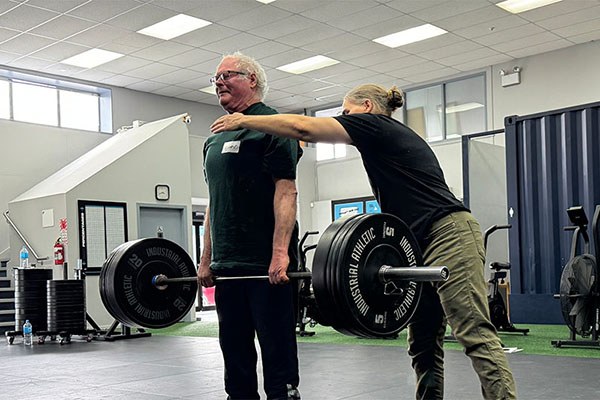
SSC Mia Inman using a tactile cue to guide Chris into the lockout at the top of the deadlift at the Starting Strength training camp held in New Zealand this past weekend. [photo courtesy of Byron Johnston]
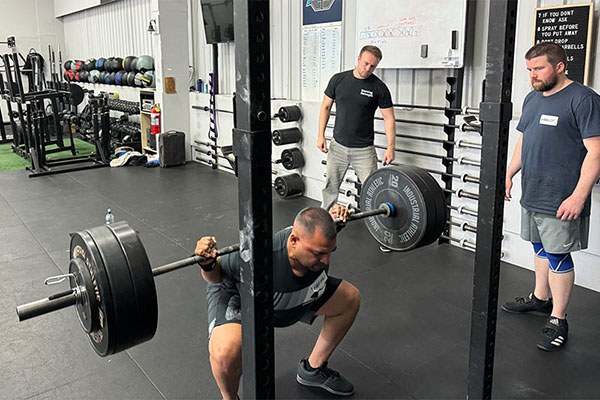
Hamish & Dylan on hand as spotters while Personal Trainer Farhan squats down to depth on the platform with coach Byron Johnston keeping an eye on every rep. [photo courtesy of Jon Clarke]

Starting Strength has arrived in New Zealand! This November marks the first ever lifting camp to happen in this country. The camp was coached by SSCs Byron Johnston & Mia Inman; thanks to owner Dave Koni at Crossfit AKL for having us. [photo courtesy of Sharyn Robb]
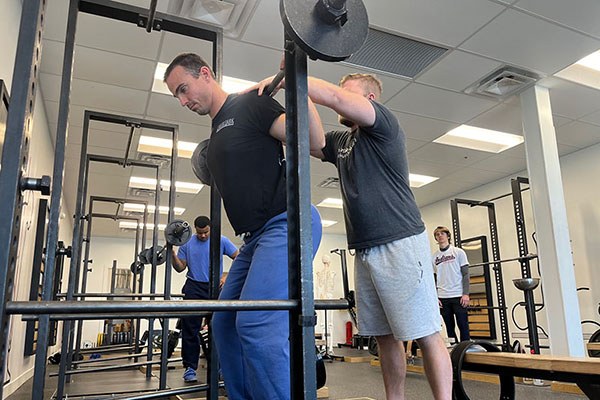
Andrew checks the bar position on Adam’s back to make sure it’s just under the spine of the scapula at the squat and deadlift camp at Starting Strength Indianapolis. [photo courtesy of Jacob Tenace]
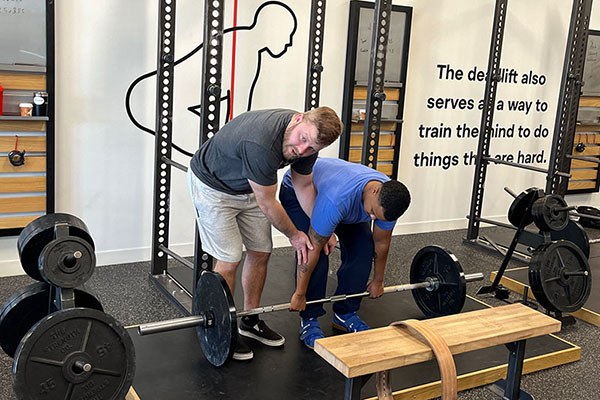
The knees will mate to the elbow pits in a correctly set up deadlift. If the knees are forward, the butt has dropped, and the bar gets shoved forward of the midfoot. If the knees are back, the lifter is too bent over with hips way too high. Andrew shows and explains this at the squat and deadlift camp at Starting Strength Indianapolis. [photo courtesy of Alisa Jerz]

Mike deadlifting 135lb for a set of five at the squat and deadlift camp in Indianapolis using plenty of chalk. Without chalk, the deadlift will stall far sooner than is necessary. Get some chalk! [photo courtesy of Alisa Jerz]
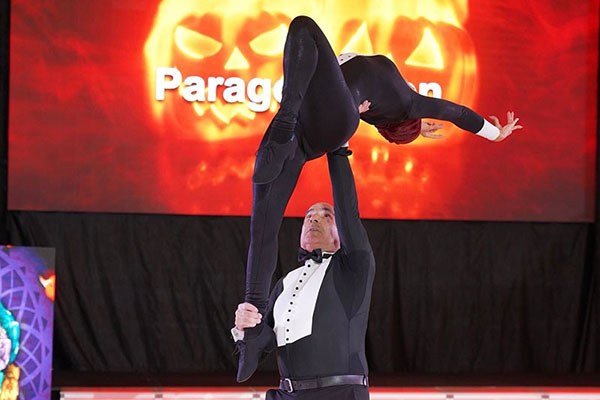
Starting Strength Boston member Stan executes a modified press in a ballroom dance competition finishing in first place at the age of 78. [photo courtesy of Stan Bloomenthal]
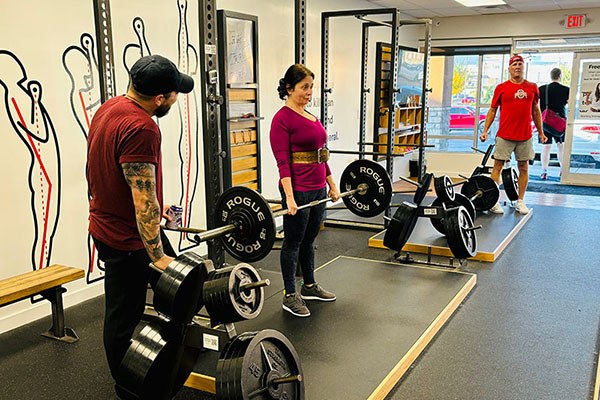
Starting Strength Cincinnati‘s newest member Irene wraps up her 2nd week of training with SSC Tony Maldonado. [photo courtesy of Luke Schroeder]
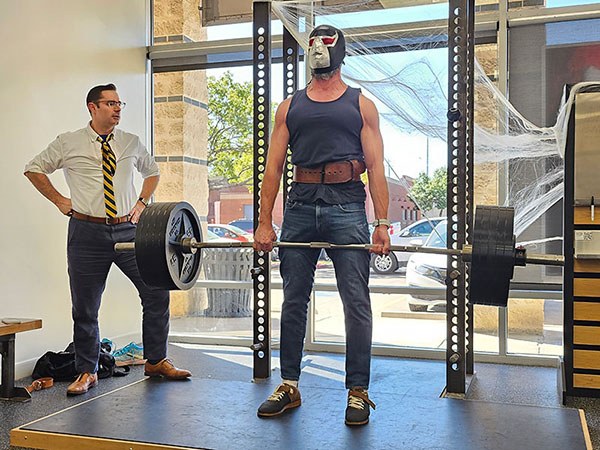
Tyler pulls 500 lb as resident luchador for Starting Strength Austin while coached by Clark Kent. Over two dozen lifters participated in the Day of the Deadlift setting PRs and showing their kids the results of hard work. [photo courtesy of Elysa Sanchez]

After completing his squats early on Tuesday morning, Andrew moves on to his pressing and then his deadlifting at Testify Strength & Conditioning in Omaha, NE. [photo courtesy of Phil Meggers]
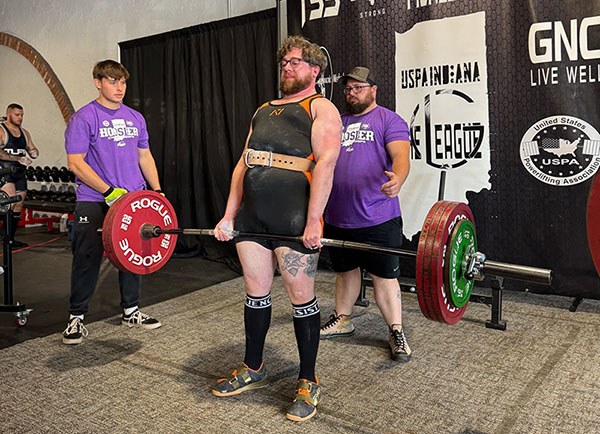
Starting Strength Indianapolis member, Collin, competes in his very first powerlifting meet. He set personal records on all of his lifts, completed all nine contested reps, and totaled 1,083lb. Collin is one of the hardest working people we at the gym know, and his dedication to high standards is unimpeachable. [photo courtesy of Lexi Mathioudakis]

Starting Strength Atlanta family, friends, clients, and apprentices, and even the wait staff of Los Abuelos Mexican Grill, wish a happy birthday to Adam Martin, SSC (left, en el sombrero). [photo courtesy of John Klein]
Get Involved
Best of the Week
Mouthguards, Sleep and Other Unconsciousness
Jason Donaldson
I have three loosely related questions:
1) I have benefited greatly from CPAP for some time now. That said, I have been curious whether a dental appliance was worth trying, to have a backup in situations of no power for the CPAP – air travel, outage, disaster, etc. At a recent routine dental visit, I asked my dentist about this, and was shocked at the level of cost this entails (c. $2,500) If anyone has experience with such an appliance, I’m interested, in case of unexpected insurance coverage that makes it worth trying.
2) That said, the conversation also involved him recommending that I consider a mouthguard for lifting. While a dentist-supplied one is also pretty steep (though he’d “throw it in” if I did the sleep apnea one…), I see cheap OTC versions. I understand that some lifters use them, and at $25 or so, it might be worth considering, especially if anyone has experience that can speak to this use case.
3) Here’s the interesting part, though… In the conversation with the dentist, I asked offhand about light-headedness or passing out under load. He enthusiastically suggested that the benefits of a mouthguard during lifting can help with alignment and whatnot to reduce pressure on the blood supply to the brain, reducing this risk. I understand he has bills to pay, of course, and that his worldview is decidedly xenocentric by nature, but I am curious about this from the standpoint of knowledge in the lifting domain.
I manage my head rushes just fine on the primary lifts, especially the press. I have had a couple of instances on the pin press, however, where I’ve lost consciousness, thankfully without injury. I have never experienced this when grinding unsuccessfully and missing a regular press – only when pressing from the pins. One was an isolated incident about five years ago, where I figured out how to deal with it and was fine from then on, continuing to train the lift. However, the other one and a half times (once waking up on the deck, once a “standing eight count” situation) were very recent, and so I’ve cut out pin pressing altogether.
I don’t hold my Valsalva in my mouth – I bare my teeth to prevent that – and I don’t relax all of a sudden after the lift, making sure to keep my grip and my legs clenched to work against a sudden drop in BP. In fact, the full passing out on this recent pair of incidents came before I’d completed the lift, as verified by an observer.
My suspicion on the whole effect is therefore that it’s related to pressure from the musculature around the arteries of the neck that’s basically choking me out, and that biting a mouthguard isn’t likely to affect this one way or another, but I don’t want to lean on my own understanding if I can help it. I also want to make sure I’m not missing something else. The press is my favorite lift, after all.
Maybach
The blue book discusses lightheadedness on the press, and as you say, is generally thought to be due to increased pressure on the carotid sinus, which can provoke a baroreflex action at the heart which causes a rapid drop in blood pressure (similar to a “sleeper hold”). The solution given is to take a new breath between each rep (and therefore reduce the exposure of the sinus to high pressure). I have had…mixed success with this technique. The times I get lightheaded on the press seem to be due to the actual muscle contraction in the area (since it appears to be randomly and uniformly distributed among “heavy” reps, such as first reps or singles, rather than merely later or especially effortful reps). This would seem to jibe with your experience of it on the pin press more than the full press. And the loss of “tightness” required to take a breath can in some cases cost at least a full rep. It is perhaps a matter of insufficient skill on my part in taking a shallow enough breath to alleviate pressure but not to lose tightness, but that’s as may be.
It is possible, I suppose, that a “heady” Valsalva could increase pressure on the carotid sinus sufficient to provoke this action, and if so, a mouth guard could alleviate this. Then again, a well executed “heady” Valsalva at the right time can also work to alleviate this faintness if it’s not too severe.
Mark Rippetoe
My advice is to take an open-mouthed valsalva. Works for me.
Best of the Forum
Heavy sandbag training after NLP
Adriano Alves
Anyone have experience with heavy sandbag training (since they are loadable) after depleting all NLP (which is not my case) in a way that does not compromise strength training at all? They worth it? Or is it just a waste of time and sweat?
Southern Lifter
How old are you and what are your numbers?
15-20 minutes of intensive sandbag should not disturb your strength process. It is also a good exercise (if you know how to boxing, Lol)
Adriano Alves
Oh man sorry
The sandbag i was saying is a heavy sandbag full of sand for lifting and toss
I have no plans to do any other stressful exercise (with excession the prowler of course) until I really finish my NLP.
Sandbag lifting is something I really like, but I have no reason to do it if there’s no benefits or if I mess with the strength training. That’s why I am asking.
32 years old
Height: 1,83
Weight: 125kg
Squat 3×5 – 190kg
Press 3×5 – 85kg
Bench 3×5 – 116kg
Deadlift 1×5 – 185kg (working on my form)
Nick Delgadillo
There’s no way you can load a sandbag heavy enough, and in a way that you can lift it to drive any appreciable strength adaptation. This is regardless of what the functional movement people think regarding loading multiple planes of motion. The limiting factor with a sandbag very quickly becomes being able to interact with it.
A 200 lb sandbag is heavy and hard to deal with, but it’s little more than a conditioning tool – an ineffective one at that – because you only adapt up to the point at which the bag produces stress. As Johnsonville and I and many others have experienced. A 180 lb human being who is fighting back is a much harder conditioning problem than a sandbag that’s 215, or 220, or maybe even 250 lbs.
So if you’re strength training, a sandbag has no value other than playing construction laborer. If you’re not strength training, it also has no value because you’ll get more results in any measurable domain using a barbell.






